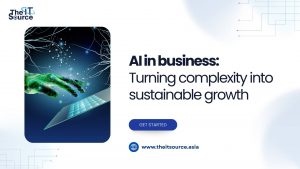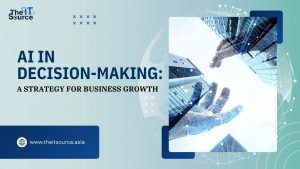AI Workflow Automation: A 5-Step Guide to Boost Efficiency
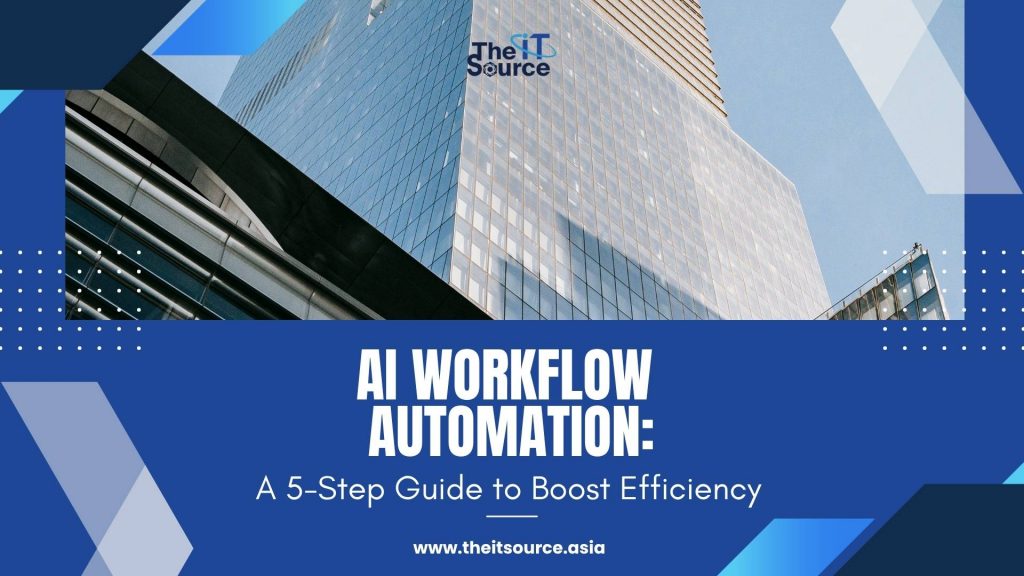
In today’s hyper-competitive global landscape, businesses are constantly searching for a strategic edge to optimize performance and drive growth. Yet, many organizations find themselves constrained by the silent drag of manual, repetitive processes. These legacy workflows not only slow down operations but also introduce costly human errors and divert valuable talent away from strategic initiatives. This is where AI Workflow Automation emerges as a transformative force, serving as the key to unlocking unprecedented levels of efficiency. It’s a solution that goes far beyond simple automation, offering intelligent capabilities that can adapt, learn, and reason.
This technology is no longer a futuristic concept reserved for tech giants; it is a powerful and accessible tool for businesses of all sizes. In this in-depth guide, The IT Source will not only clarify what AI Workflow Automation truly is but will also provide a detailed, five-step roadmap for its successful implementation, empowering your organization to thrive in the digital age.
Beyond Standard Automation: The AI Difference
When discussing automation, the term Robotic Process Automation (RPA) often comes to mind. RPA is a valuable tool, acting as a software “robot” that is programmed to mimic human actions within a digital system, following a strict, predefined script. However, the inherent weakness of RPA is its rigidity; any slight change to a user interface or a step in the process can cause the bot to fail, requiring manual intervention and reprogramming.
AI Workflow Automation, on the other hand, represents a significant evolutionary leap. Instead of merely “following instructions,” it is equipped with an intelligent “brain.” By integrating automatic AI technologies like Machine Learning (ML) and Natural Language Processing (NLP), the system gains the ability to learn from data, recognize patterns, process unstructured information (such as the content of emails, PDF invoices, and images), and make context-based decisions. It effectively simulates human cognitive functions, which is the foundation of modern AI technology.
To draw an analogy, think of RPA as a player piano that can only perform a single song by following the holes punched in a paper roll. In contrast, AI Automation is like a skilled jazz musician who can listen to the band, improvise, and create new, harmonious melodies based on a foundational chord structure. This inherent intelligence and adaptability are what make it a game-changing technology for modern businesses.
Why AI Automation is a Strategic Investment for Your Business
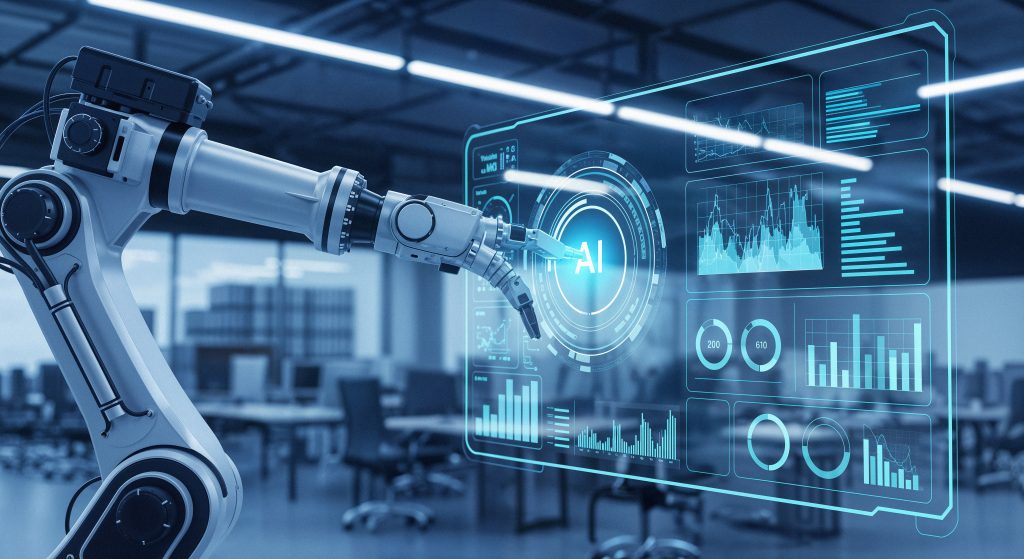
Adopting ai automation is more than just a short-term cost-cutting measure; it is a strategic investment that delivers compounding returns and fundamentally reshapes an organization’s operational fabric.
The most immediate and tangible benefit is, of course, the optimization of costs and human resources. Instead of linearly scaling your workforce with your workload, you can deploy a team of digital workers that operate 24/7 without fatigue. This doesn’t mean replacing people, but rather elevating them. By freeing talented employees from the monotony of repetitive tasks, you empower them to focus on high-value activities that require critical thinking, creativity, and strategic planning, ultimately boosting both morale and innovation.
Furthermore, AI Workflow Automation delivers superior accuracy and consistency. In sectors like finance, logistics, and compliance, a minor data entry error can cascade into significant financial loss or regulatory penalties. AI operates based on defined algorithms and rules, virtually eliminating human errors caused by fatigue or distraction. This ensures a higher level of data integrity, strengthens compliance protocols, and effectively mitigates operational risk.
Another powerful strategic advantage is the ability to scale operations with unprecedented flexibility. As your business navigates periods of rapid growth or market volatility, automated workflows can be scaled up or down almost instantly to handle thousands or even millions of transactions without bottlenecks. This operational elasticity allows your company to be more agile and responsive to change, unburdened by the time-consuming and costly cycles of hiring and training. The significant business impact of AI has been well-documented across numerous industries.
Ultimately, these internal improvements converge on a single, crucial goal: enhancing the customer experience. When back-office operations run smoothly, the customer is the primary beneficiary. Faster order processing, instant 24/7 responses to inquiries, and accurate issue resolution create a seamless and professional experience. This not only increases customer satisfaction but also builds long-term loyalty, turning clients into powerful brand advocates.
A 5-Step Guide to Implementing AI Workflow Automation Effectively
To ensure your journey into AI is a strategic success rather than a costly experiment, following a structured and methodical approach is paramount. Here are the five core steps refined from The IT Source’s real-world implementation experience.
Step 1: Audit, Analyze, and Prioritize Workflows
This foundational step accounts for 80% of a project’s success. Avoid the temptation to automate everything at once. Begin by creating a detailed process map of your current operations to identify the most promising candidates for automation. Ideal processes typically exhibit these characteristics:
- High Volume and Frequency: Tasks that are performed dozens or hundreds of times per day.
- Rule-Based and Repetitive: Actions that follow a clear, predictable logic.
- Prone to Human Error: Work that requires intense focus and meticulousness.
- Causes Bottlenecks: Delays in this process hold up other dependent tasks.
For example, extracting data from invoices to populate accounting software, tracking shipment statuses across multiple carrier websites, screening and categorizing inbound customer support emails.
Step 2: Select the Right Technology and Strategic Partner
Once you’ve identified the “what,” the next question is the “how.” For most small to medium-sized enterprises, partnering with a specialized technology provider is far more efficient than building a solution from scratch. When evaluating a potential partner, consider:
- Domain Expertise: Do they understand the nuances of your industry?
- Technological Capability: Is their platform flexible enough to integrate with your existing systems?
- Comprehensive Support: Do they offer consulting, implementation, and post-launch support?
- Proven Track Record: Can they provide case studies of successful projects similar to yours?
Step 3: Design, Build, and Train the AI
This is the technical phase where the solution is brought to life. It involves modeling the workflow, setting up the logical rules, and, most importantly, “training” the AI. This training can involve feeding the system historical data to learn patterns (e.g., providing 1,000 sample invoices for the AI to learn data extraction) or configuring it to perform actions on a user interface. Advanced solutions, like The IT Source’s AI Worker, leverage Vision AI to “see” and interact with any web application, just as a human would, bypassing the need for complex API integrations.
Step 4: Conduct Rigorous Testing, Refinement, and Validation
No system is perfect on its first run. Before a full-scale launch, the automated workflow must undergo stringent testing in a controlled staging environment. This phase, known as User Acceptance Testing (UAT), should involve the very employees who will ultimately use or oversee the system. The goal is to identify logical flaws, validate performance against benchmarks, and gather feedback for refinement, ensuring the solution is robust, reliable, and meets business expectations. This methodical approach is a cornerstone of the broader trend of hyperautomation that leading global enterprises are embracing.
Step 5: Deploy, Monitor, and Continuously Optimize
Once the system has passed all tests, it’s time to “go live.” However, the work doesn’t end at deployment. A successful launch includes robust change management—training employees and building trust in the new, automated process. Key Performance Indicators (KPIs) such as average processing time, error rate, and cost-per-transaction must be established and monitored. The data gathered provides invaluable insights for ongoing optimization, allowing the AI to become smarter and more efficient over time.
The IT Source: Your Trusted Partner on the AI Automation Journey
We understand that implementing AI Workflow Automation is a strategic journey that requires a blend of cutting-edge technology and practical, hands-on experience. At The IT Source, we go beyond just providing software. With our flexible AI Agent Builder Platform and a team of seasoned experts who understand business operations, we partner with you through all five stages of implementation. We are committed to ensuring your project is a resounding success, delivering measurable value and a sustainable competitive advantage.
Are you ready to free your business from the constraints of manual processes and unlock the next level of operational excellence?
Take the first step on your transformation journey. Contact our team of experts at The IT Source today for a complimentary consultation, and let’s map out the ideal AI Workflow Automation strategy for your unique business needs!
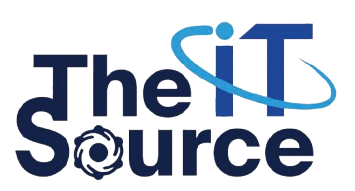

 日本語
日本語